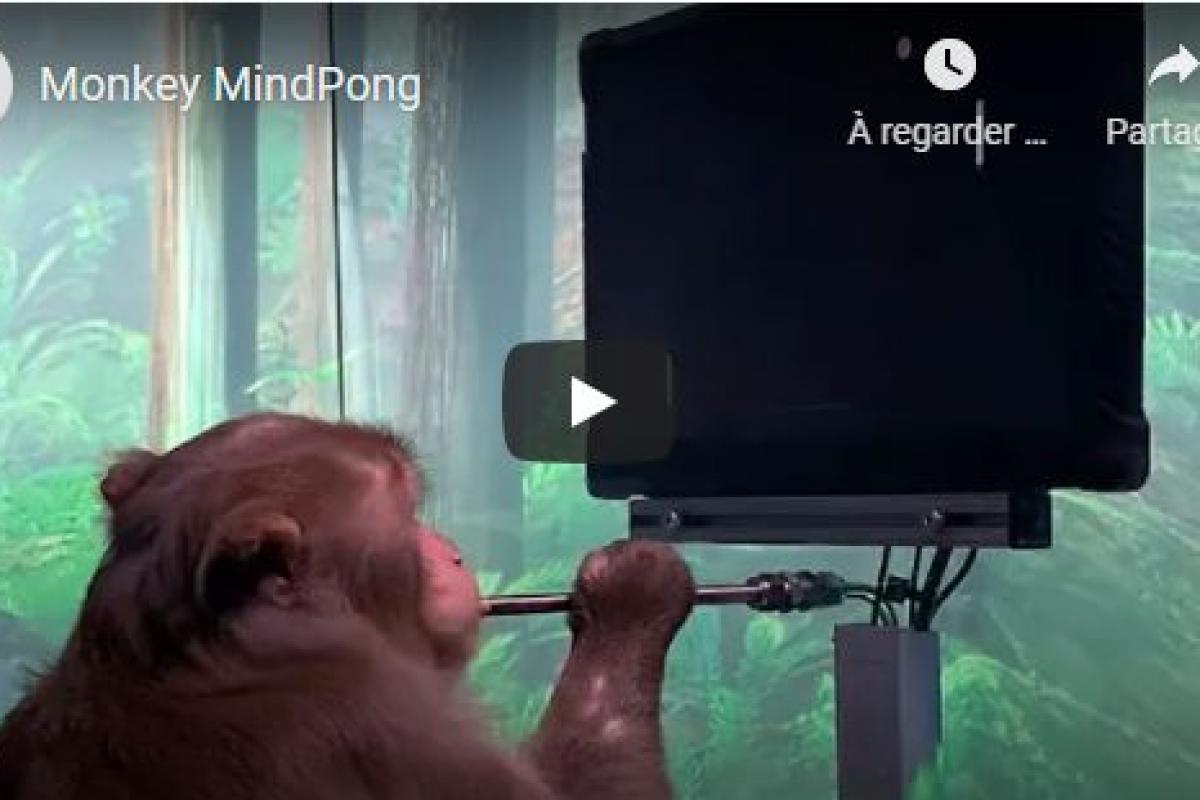Unité 3 | Ressource Texte

Monkey “MindPong” Could Potentially Revolutionize Healthcare
An article from Forbes Magazine about the way neural engineering could help disabled people.
Monkey “MindPong” Could Potentially Revolutionize Healthcare
Elon Musk’s Neuralink is yet again making waves in both the mainstream media and scientific community. The latest demonstration by the cutting-edge technology company entails Pager, a nine-year-old Macaque monkey playing “MindPong.” However, Pager isn’t just a regular monkey—rather, he’s had a Neuralink interface implanted in him, allowing him to play the game literally with only his mind (hence, MindPong).
Neuralink’s brain-machine interface is by no means simple technology. The company is attempting to develop “a fully-implanted, wireless, high-channel count brain-machine interface (BMI) with the goal of enabling people with paralysis to directly use their neural activity to operate computers and mobile devices with speed and ease.”
The video demonstration starts off relatively simply, with Pager playing with a joystick to
move a cursor around to targets presented on the screen. As the presenter explains, while Pager is doing this activity, the Neuralink chip is recording Pager’s neuronal activity and feeding the data into a decoder algorithm, allowing the researchers the ability to predict Pager’s “intended hand movements, in real time.” After studying and modeling the relationship between the neuronal activity and the corresponding joystick movements, the presenter states that “we can use the output from the decoder to move the cursor, instead of the joystick,” essentially enabling Pager to control the cursor simply through his neuronal activity (i.e. his thoughts). The video goes on to show a scene where Pager continues to play with the joystick to accurately move around the cursor to the targets—however, now, the joystick is fully disconnected, and the presenter states that at this point, “he’s [Pager] controlling the cursor with entirely decoded neural activity.”
The video presentation concludes with Pager playing pong, as the presenter indicates that “to control his paddle on the right side of the screen, Pager simply thinks about moving his hand up or down.” Unsuprisingly, the video goes on to show that Pager is actually very good at “MindPong”—holding up a perfect game even at a more increased and difficult play speed.
The company has valiant aspirations with this technology, hoping to use neural engineering “to help people with paralysis to regain independence through the control of computers and mobile devices.” Indeed, the company states that its “devices are designed to give people the ability to communicate more easily via text or speech synthesis, to follow their curiosity on the web, or to express their creativity through photography, art, or writing apps.”
The process for inserting a Neuralink is as complex as the hardware itself. Given that the chip will entail micro-scale neural threads, it will likely be too delicate for placement by human hands. Hence, the company is “building a robotic system that the neurosurgeon can use to reliably and efficiently insert these threads exactly where they need to be.”
Undoubtedly, there is still a significant amount of work left to be done, and more testing, analysis, and careful investigation will be required to determine the technology’s long-term effects, potential safety issues, viable applications, and real-world efficacy. However, if this novel technology can be created in a safe and sustainable manner, it may prove to have significant clinical implications.
Forbes Magazine, Apr. 13, 2021
Questions :
1. Describe Neuralink’s process.
2. Describe the experiment presented.
3. List who this new technology will help.
4. Record a short audio to explain Pager’s experiment.
Crédits :
Monkey “MindPong”: Elon Musk & Neuralink’s Latest Could Potentially Revolutionize Healthcare, by Sai Balasubramanian, M.D., J.D. Apr 13, 2021, © Forbes






